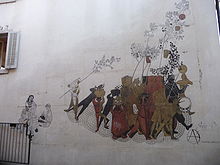
Aarau is a town, a municipality, and the capital of the northern Swiss canton of Aargau. The town is also the capital of the district of Aarau. It is German-speaking and predominantly Protestant. Aarau is situated on the Swiss plateau, in the valley of the Aare, on the river's right bank, and at the southern foot of the Jura Mountains, and is west of Zürich, 58 kilometres (36 mi) south of Basel and 65 kilometres (40 mi) northeast of Bern. The municipality borders directly on the canton of Solothurn to the west. It is the largest town in Aargau. At the beginning of 2010 Rohr became a district of Aarau.
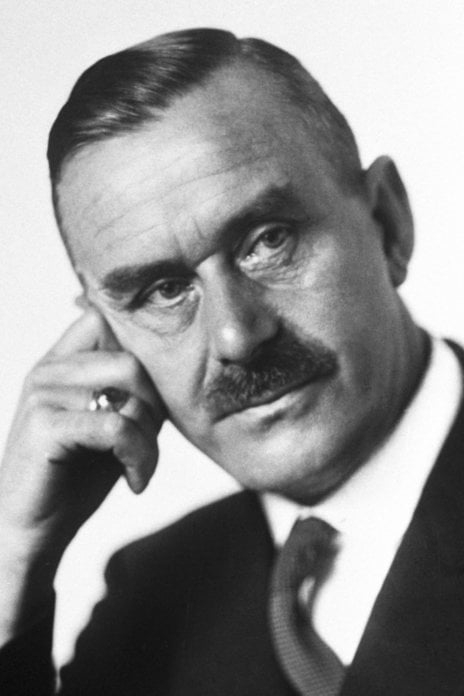
Paul Thomas Mann was a German novelist, short story writer, social critic, philanthropist, essayist, and the 1929 Nobel Prize in Literature laureate. His highly symbolic and ironic epic novels and novellas are noted for their insight into the psychology of the artist and the intellectual. His analysis and critique of the European and German soul used modernized versions of German and Biblical stories, as well as the ideas of Johann Wolfgang von Goethe, Friedrich Nietzsche, and Arthur Schopenhauer.

Art Nouveau is an international style of art, architecture, and applied art, especially the decorative arts. It was often inspired by natural forms such as the sinuous curves of plants and flowers. Other characteristics of Art Nouveau were a sense of dynamism and movement, often given by asymmetry or whiplash lines, and the use of modern materials, particularly iron, glass, ceramics and later concrete, to create unusual forms and larger open spaces. It was popular between 1890 and 1910 during the Belle Époque period, and was a reaction against the academicism, eclecticism and historicism of 19th century architecture and decorative art.

Henry Patrick Clarke RHA was an Irish stained-glass artist and book illustrator. Born in Dublin, he was a leading figure in the Irish Arts and Crafts Movement.
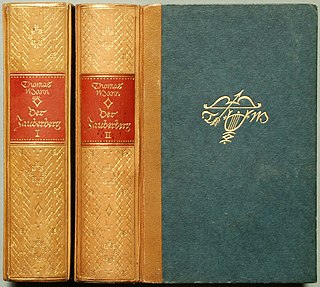
The Magic Mountain is a novel by Thomas Mann, first published in German in November 1924. It is widely considered to be one of the most influential works of twentieth-century German literature.
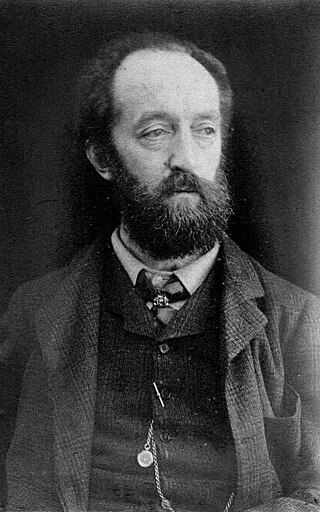
Henry Holiday was an English Victorian painter of historical genre and landscapes, also a stained-glass designer, illustrator, and sculptor. He was influenced by the Pre-Raphaelite Brotherhood, many of whom he knew.

John La Farge was an American artist whose career spanned illustration, murals, interior design, painting, and popular books on his Asian travels and other art-related topics. La Farge made stained glass windows, mainly for churches on the American east coast, beginning with a large commission for Henry Hobson Richardson's Trinity Church in Boston in 1878, and continuing for thirty years. La Farge designed stained glass as an artist, as a specialist in color, and as a technical innovator, holding a patent granted in 1880 for superimposing panes of glass. That patent would be key in his dispute with contemporary and rival Louis Comfort Tiffany.

The Grossmünster is a Romanesque-style Protestant church in Zürich, Switzerland. It is one of the four major churches in the city. Its congregation forms part of the Evangelical Reformed Church of the Canton of Zürich. The core of the present building near the banks of the Limmat was constructed on the site of a Carolingian church, which was, according to legend, originally commissioned by Charlemagne. Construction of the present structure commenced around 1100 and it was inaugurated around 1220.
Oskar Seidlin was a Jewish emigre from Nazi Germany first to Switzerland and then to the U.S. He taught German language and literature as a professor at Smith College, Middlebury College, Ohio State University, and Indiana University from 1939 to 1979. He authored a number of fictional and non-fictional works.
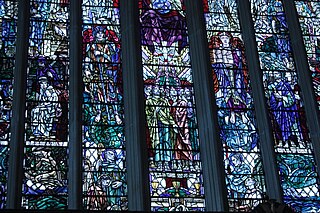
Douglas Strachan is considered the most significant Scottish designer of stained glass windows in the 20th century. He is best known for his windows at the Peace Palace in The Hague, Netherlands, at Edinburgh's Scottish National War Memorial and in cathedrals and churches throughout the United Kingdom. He is also known for his paintings, murals, and illustrations.

Józef Mehoffer was a Polish painter and decorative artist, one of the leading artists of the Young Poland movement and one of the most revered Polish artists of his time.
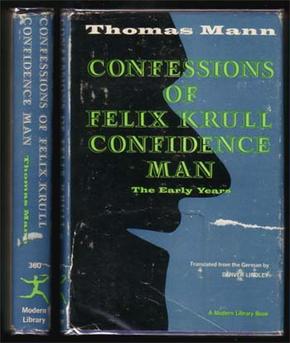
Confessions of Felix Krull is an unfinished 1954 novel by the German author Thomas Mann.

Bernard Sleigh was an English mural painter, stained-glass artist, illustrator and wood engraver, best known for An Ancient Mappe of Fairyland, Newly Discovered and Set Forth (1917), which depicts numerous characters from legends and fairytales. There is a copy of The Ancient Mappe in the Library of Congress in Washington, D.C. He was a member of the Royal Birmingham Society of Artists between 1923 and 1928. As a young man, Sleigh was greatly inspired by the work of George MacDonald and William Morris.
Klaus Schwarzkopf was a German actor. From 1971 until 1978 he starred in the Norddeutscher Rundfunk version of the popular television crime series Tatort. He was also known as a respected stage actor and for being the German dubbing voice of Peter Falk as Columbo during the 1970s.

The Sint Janskerk in Gouda, the Netherlands, is a large Gothic church, known especially for its stained glass windows, for which it has been placed on the list of the top 100 Dutch monuments.
Arild Rosenkrantz was a Danish nobleman painter, sculptor, stained glass artist and illustrator.
Walter Robert Loosli was a Swiss sculptor, woodcut engraver and maker of painted stained glass panels and windows.

There are more than 100 illustrators of English-language editions of Alice's Adventures in Wonderland (1865) and Through the Looking-Glass (1871), with many other artists for non-English language editions. The illustrator for the original editions was John Tenniel, whose illustrations for Alice and Looking Glass are among the best known illustrations ever published.
Anne Marie Vallotton was a Swiss and French artist best known for her illustrations in the Good News Bible. According to Harpercollins, Vallotton is the bestselling artist of all time, thanks to worldwide sales of the Good News Bible in excess of 225 million.
Felix Hoffmann may refer to:
